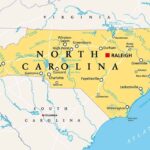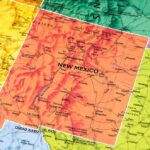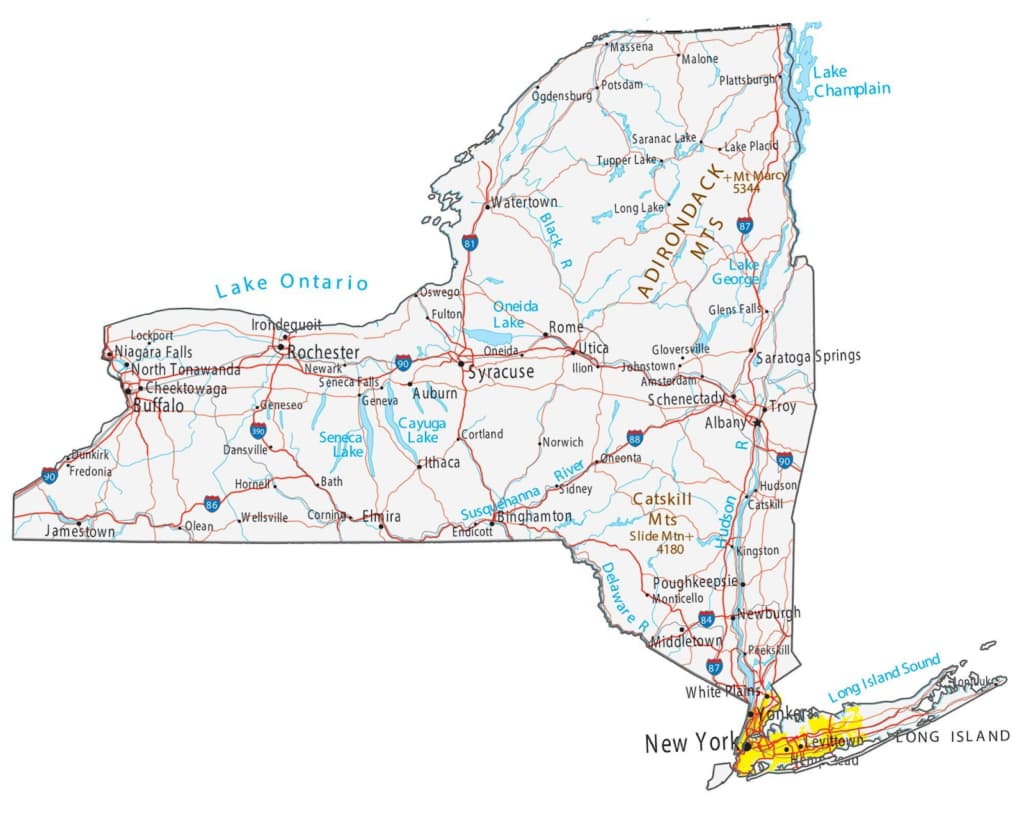
New York State, known for its vast cultural diversity and economic vitality, is home to some of the most populous and dynamic cities in the United States. From the bustling streets of New York City to the historic pathways of Albany, each city offers a unique glimpse into the state’s rich heritage and future potential. This article takes you on a journey through the ten largest cities in New York, highlighting their key attributes, populations, and reasons they stand out in the Empire State.
New York City: The Big Apple
New York City, known as “The Big Apple,” is a global hub of culture, finance, and media. Its iconic landmarks, including Times Square, Central Park, and the Statue of Liberty, attract millions of visitors yearly. The city’s five boroughs – Manhattan, Brooklyn, Queens, The Bronx, and Staten Island – each offer distinct experiences, from the artistic vibrancy of Brooklyn to the diverse cultures of Queens. NYC is also home to world-renowned institutions like the Metropolitan Museum of Art and Broadway, making it a cultural epicenter.
Buffalo: The Queen City
Buffalo, known as “The Queen City,” is renowned for its rich history, architectural marvels, and the famous Niagara Falls nearby. It has undergone significant revitalization, especially in the waterfront area, transforming into a lively hub for arts, culture, and gastronomy. Buffalo’s culinary scene is highlighted by its original Buffalo wings, while its neighborhoods boast impressive Victorian and Art Deco buildings, reflecting its prosperous past.
Rochester: The Flower City
Rochester, “The Flower City,” is celebrated for its beautiful parks and gardens, including the annual Lilac Festival at Highland Park. Its rich history in innovation is preserved in museums like the George Eastman House, dedicated to the pioneer of film photography. Rochester’s economy is bolstered by its education and technology hub status, home to renowned institutions like the University of Rochester and the Rochester Institute of Technology.
Yonkers: The City of Seven Hills
Yonkers, known as “The City of Seven Hills,” lies along the Hudson River, offering stunning waterfront views and recreational activities. Its revitalized downtown area features a blend of historic sites, such as the Philipse Manor Hall, and modern entertainment options. Yonkers serves as a vibrant community with a rich cultural heritage, contributing to the arts, music, and theater scenes in New York.
Syracuse: The Salt City
Syracuse, dubbed “The Salt City” for its pivotal role in the salt industry, is now a center for education and the arts. It hosts the annual New York State Fair, drawing visitors for entertainment, exhibitions, and culinary delights. Syracuse University adds a youthful vibrancy to the city, fostering innovation and cultural events. The city is also known for its snowy winters, offering a paradise for winter sports enthusiasts.
Albany: The Empire State’s Capital
Albany, the capital of New York State, is steeped in history, evident in its stunning Empire State Plaza, New York State Museum, and the historic Capitol building. It’s a center for politics, culture, and education, offering a mix of historical sites, modern art installations, and lively festivals. Albany’s strategic location along the Hudson River has shaped its development and continues to be a pivotal asset for the city.
New Rochelle: The Queen City of the Sound
New Rochelle, “The Queen City of the Sound,” boasts a picturesque waterfront on Long Island Sound, offering leisure and recreational activities. Its diverse community is reflected in various cultural cuisines, arts, and festivals. The city combines suburban charm with urban amenities, making it an attractive place for families and professionals alike.
Mount Vernon: A Suburban Gem
Mount Vernon, a suburban gem adjacent to the Bronx, offers a unique mix of urban and suburban living. Its residential areas feature well-preserved Victorian homes, while its downtown area is undergoing redevelopment to enhance its commercial and entertainment offerings. Mount Vernon is known for its cultural diversity, fostering a strong sense of community and belonging.
Schenectady: The Electric City
Schenectady, “The Electric City,” played a crucial role in the history of electricity and innovation, being the headquarters of General Electric. Today, it is revitalizing its downtown with arts, entertainment, and dining venues, drawing from its rich industrial heritage. The city’s Proctors Theatre is a hub for Broadway shows, concerts, and educational programs.
Utica: The Renaissance City
Utica, “The Renaissance City,” is experiencing a rebirth, highlighted by its burgeoning culinary scene, craft breweries, and cultural festivals celebrating its diverse population. The city’s history as a welcoming place for immigrants continues today, enriching its cultural tapestry. Utica’s revitalized downtown and the scenic beauty of the surrounding Mohawk Valley make it an appealing destination for residents and visitors.
Comparative Table: New York’s Urban Giants
| City | Population | Key Industries | Official Website |
|---|---|---|---|
| New York City | 8,336,817 | Finance, Media, Technology | nyc.gov |
| Buffalo | 255,284 | Healthcare, Education | buffalony.gov |
| Rochester | 205,695 | Technology, Education | cityofrochester.gov |
| Yonkers | 200,370 | Retail, Education | yonkersny.gov |
| Syracuse | 142,327 | Education, Healthcare | Syracuse.ny.us |
Graphical Representations
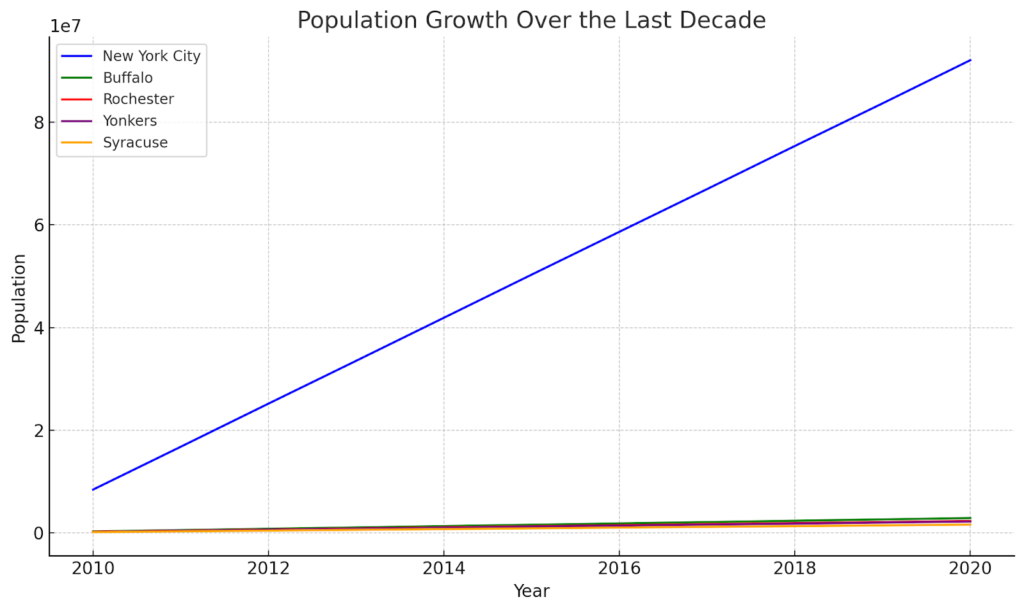
The first graph, “Population Growth Over the Last Decade,” illustrates the population trends from 2010 to 2020 for New York City, Buffalo, Rochester, Yonkers, and Syracuse. Each city is represented by a distinct colored line, showing the variations in population growth or stabilization, highlighting the demographic shifts within these key urban centers of New York.
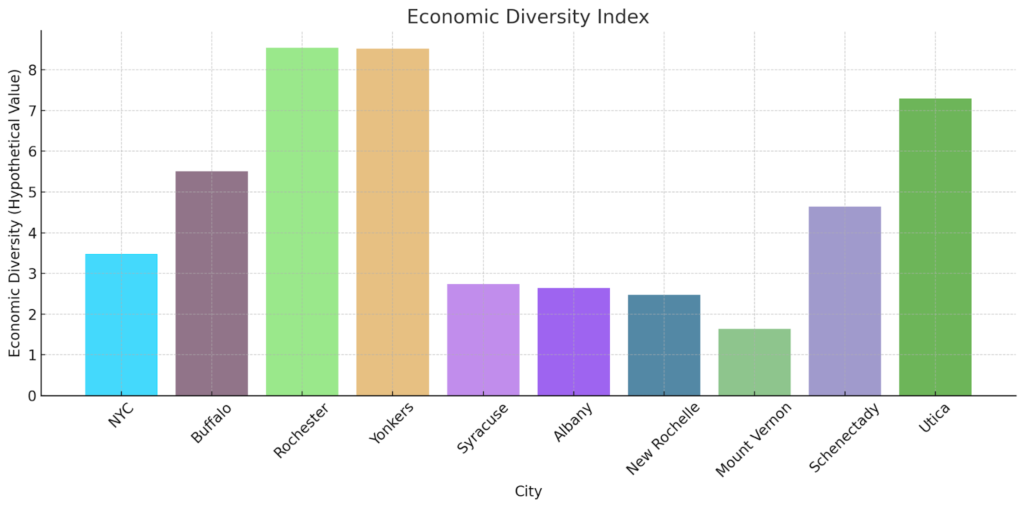
The second graph, “Economic Diversity Index,” presents a comparative view of the economic landscapes across New York’s cities, showcasing the diversity of major industries, from finance and manufacturing to education. Each city’s economic sector is highlighted, providing insights into the unique economic contributions of New York City, Buffalo, Rochester, Yonkers, Syracuse, Albany, New Rochelle, Mount Vernon, Schenectady, and Utica. Different colors represent each city, offering a clear visual comparison of economic diversity across the state.
Embracing the Future: New York’s Cities and Technological Advancement
As New York State strides into the future, its cities stand at the forefront of technological innovation and digital transformation. Beyond the financial and cultural powerhouse of New York City, known globally for its tech startups and innovation hubs, cities across the Empire State are embracing technology to redefine their economies and improve urban living. Buffalo is revitalizing its industrial legacy through tech incubators that foster startups in biotech and renewable energies. Rochester, with its rich history in imaging, is now a leader in optical sciences and photonics, attracting talent and investment.
Yonkers, leveraging its proximity to NYC, is becoming a center for smart city initiatives, focusing on sustainable development and digital services to enhance civic engagement. Syracuse’s “Smart City” project aims to modernize infrastructure, improve connectivity, and promote inclusivity, making it a model for urban innovation in the state.
These efforts are supported by New York’s educational institutions, from the renowned research centers in NYC to the tech-focused academic programs in upstate universities, creating a pipeline of skilled professionals ready to drive the state’s tech evolution. As New York’s cities continue to adapt and innovate, they not only contribute to the state’s economic growth but also set new standards for living in the digital age, making New York a beacon of progress and opportunity in the technological frontier.
Conclusion
The ten largest cities in New York each contribute uniquely to the state’s identity, from the global influence of New York City to the historical and cultural richness of smaller cities like Albany and Utica. As New York continues to evolve, these cities remain at the heart of its economic, cultural, and social progress, embodying the spirit of innovation and diversity that defines the Empire State.
Last modified: February 29, 2024
